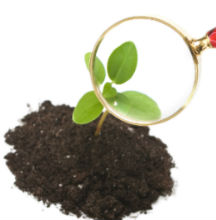In Loudoun County an increasing number of landowners may be overwhelmed by the variety and density of invasive plants on their property. Invasive plants present an increasing threat to our environment. Plants and animals as well as soil and water quality, agricultural production and even recreation may be impacted.
Master Gardeners to the rescue! To help property owners ID plants and address the challenges of identification prior to control and removal, the VCE Loudoun Master Gardener office has established a site visit program for Invasive Plant identification.
Site Visits
The Loudoun County Master Gardener Program will send a team of Master Gardeners to visit the property, identify invasive plants and produce a report with recommendations for invasive control and removal.
In 2025, invasive ID site visits are open from April 15th through October 15th. Before submitting your visit request, please consider the following qualifications:
- Property must be within Loudoun County
- You will receive a response within a few days after submission. Email is the preferred method of communication. Be sure to check spam/ junk mail for messages.
- Visits are scheduled on a first come/ first serve basis
- While there is no minimum or maximum property size, we are only able to observe plants on up to 3 acres.
- A written report will include information about invasives identified and recommendations for species specific control or elimination.
- The VCE Loudoun Master Gardener Help Desk is also available to assist with identification and questions about invasive species.
Site visits are open until October 15th. Click link below to submit your request.
Invasive Site Request Form
Frequently Asked Questions
Why are invasive plants a concern?
In order to understand the threat invasive plants species present, it’s important to understand why invasive plants are different from native plants and non-native plants that do not create environmental disturbances.
What is a native plant?
A native plant is one that occurs naturally in a particular geographic region someplace in the world. A plant is considered native if it evolved in a particular environment without any human intervention. A native plant’s range may cover several continents or be restricted to very small, specific areas. In the United States, plants considered native are generally those recognized as present prior to European settlement. However, this country has many geographic regions and climates. Some plants native to one region of the country do not grow naturally in other parts of the country and can be considered non- native, even invasive. In Loudoun County, we look for plants that evolved in to this area. Identifying what evolved here is not an exact science, so there is some subjectivity based on observations made by botanists surveying the state.
Can native plants be invasive?
No. Native plants can spread aggressively but they are not considered invasive.
What is an invasive plant?



Invasive plants are plants introduced to an area by human activity that disrupts the natural ecosystem. Many introduced (non-native) plants used for food, gardens and other purposes are not a threat to the natural environment. However, many introduced species escaped and now reproduce in the wild. These plants compete with native plants, decrease biodiversity and often do not meet the needs of native wildlife that are dependent upon native species. Our landscapes are increasingly threatened, however, by invasive, non-native plants that compete with native flora for space and do not provide benefits to native insect, birds and other wildlife. The significant decline of native bird and insect populations can be attributed in part to the spread of invasive plants.
How do I know what’s invasive in this area?
The Virginia Department of Conservation and Recreation maintains the
Virginia Invasive Plant Species List
This list ranks invasive by species into High, Medium and Low levels of threat and includes trees, shrubs, perennials, vines, grasses/sedges/reeds and aquatic plants.
For additional resources, visit our Invasive Plant Resources page.
Why is it important to control invasive plants?
Maintaining biological diversity is critical. The interactions between living organisms (flora and fauna) over millions of years have formed complex ecosystems and food webs over millions of years. Invasive plants disrupt the balance these of ancient, natural habitats.
Many nurseries and big box stores continue to sell plants on the VA Invasive Plants list. By not purchasing and planting invasive species, you can help to maintain and restore our native ecosystem.
Can invasive plants be eliminated?
It’s not feasible to eliminate all invasive plants. However, all efforts to control the spread of invasive plants and replace them with native plants helps to restore the native ecosystem and wildlife habitats.
How are invasive plants controlled?
Mechanical, biological and chemical methods are used to control invasive plants. Each plant species is different. It’s important to identify invasive plants you want to eliminate and understand best methods for removal of that species. Factors to consider include season, growth and spread habits of the plant, density, removal costs (including supplies and equipment), time and safety.



